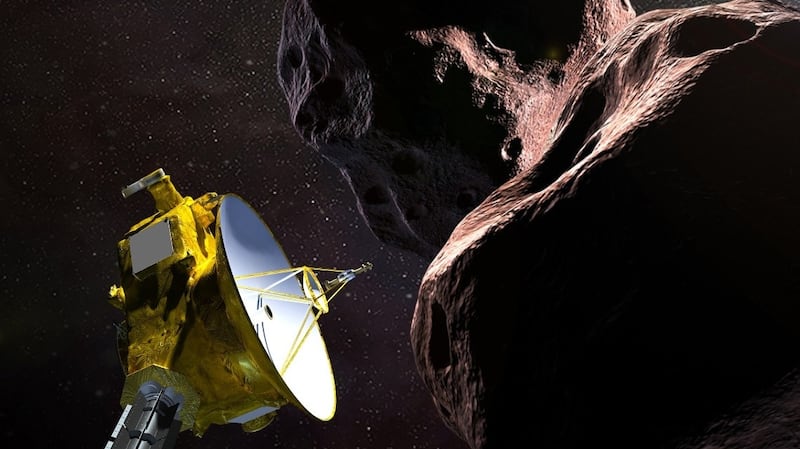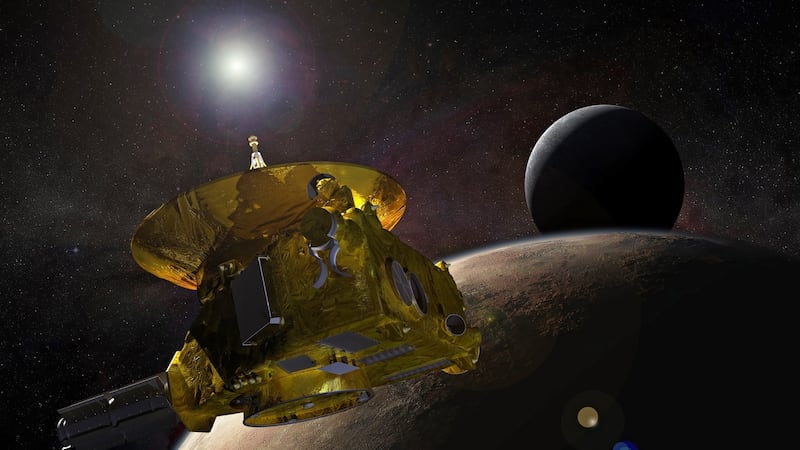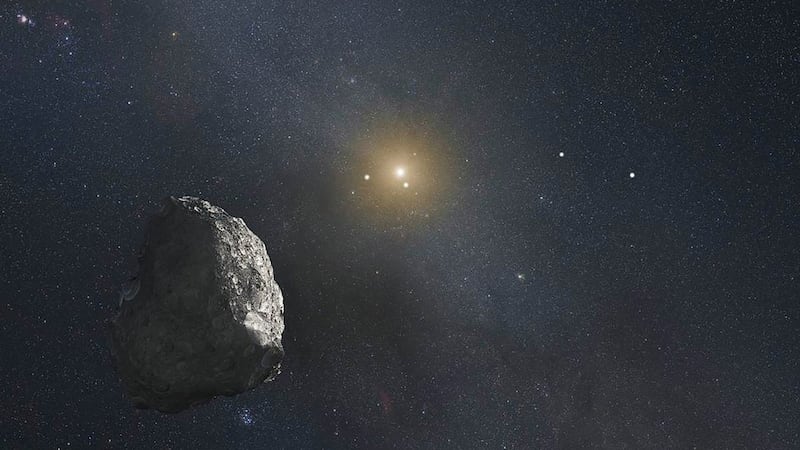Nasa scientists were celebrating after a spacecraft "phoned home" to confirm it had successfully performed the most distant space flyby in history in the early hours of New Year's Day.
Thousands of photographs of the dark, icy space rock called Ultima Thule were snapped by the New Horizons probe as it barrelled past it on the outer edge of the solar system at 05.33 Irish time.
Ultima Thule lies 4 billion miles from Earth in the Kuiper belt, a band of dwarf planets, space rocks and icy debris left over from the formation of the solar system 4.6 billion years ago. Because of the distance, scientists had to wait 10 hours to learn whether the flyby had been successful.
"It's a once in a lifetime opportunity," said Hal Weaver, a research professor at Johns Hopkins University in Maryland and a project scientist on the New Horizons mission. "This is another great step in the exploration of our solar system."
In 2015, New Horizons flew past Pluto and captured a stunning series of photographs of the dwarf planet's surface. The images revealed Pluto to be a world where nitrogen mountains tower above the ground and volcano eruptions discharge ice into a thin hydrocarbon atmosphere.
In recent weeks scientists on the New Horizons team have scoured pictures from the spacecraft's Long Range Reconnaissance Imager (Lorri) for signs of trouble ahead. At such speed, a particle the size of a grain of rice could have knocked out the spacecraft. If the team had spotted dust rings around Ultima Thule, the spacecraft would have been nudged on to a more cautious trajectory that would have taken it further from its target.



Little is known about Ultima Thule, or 2014 MU69 to use its official name. But based on preliminary observations, scientists think it may resemble a giant peanut with two large lobes fused together. The dark rock may contain frozen carbon monoxide, carbon dioxide, molecular nitrogen and methane, which may be exposed by impact craters on the surface.
While some comets that streak through the solar system are thought to have originated in the Kuiper belt, those as distant as Ultima Thule have remained on the outer edges of the solar system since birth. For this reason it is thought that objects such as Ultima Thule, the so-called cold classical Kuiper belt objects, look the same today as they did at the dawn of the solar system.
"We've never explored a body as primordial or as far away from the sun as Ultima Thule," said Mohamed Ramy El Maarry, a New Horizons science team collaborator and lecturer at Birkbeck, University of London. "This gives us a chance to look at what comets are like before they enter the inner solar system. They've been in deep freeze since they formed 4.6 billion years ago."
He added: “What’s really exciting is we expect to see surprises. We are really looking at the basic ingredients of the solar system. This can tell us a lot about the building blocks of the solar system, about the conditions when the solar system formed, and about other solar systems as well.” – Guardian service












